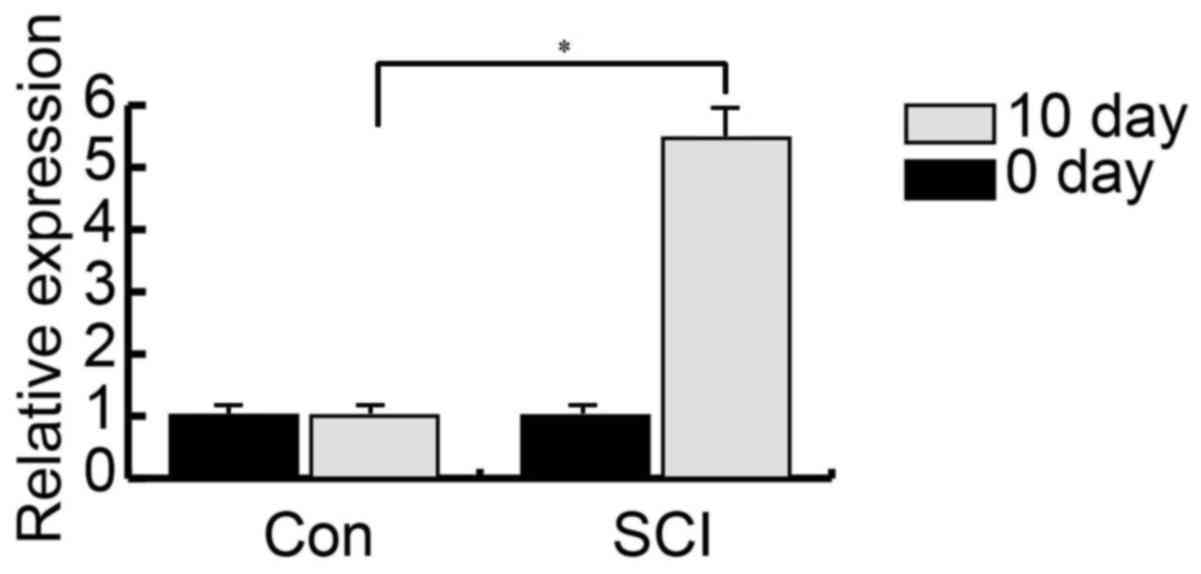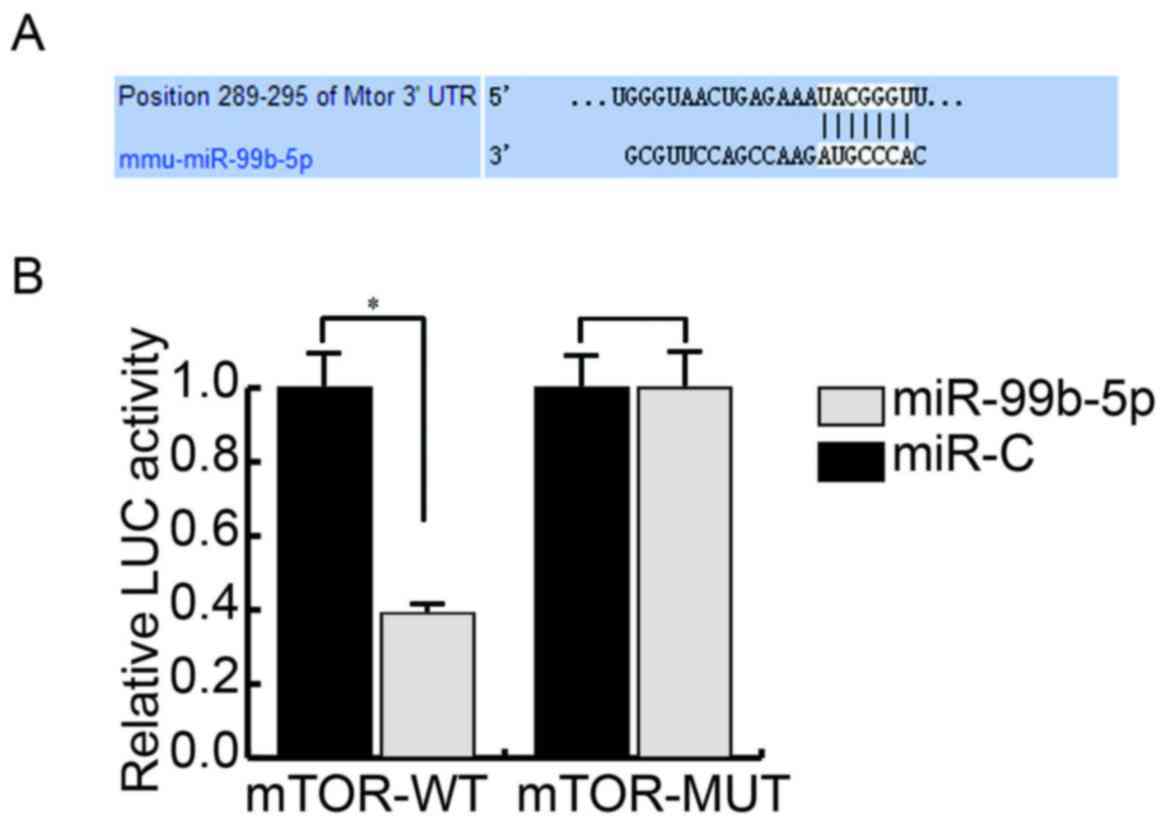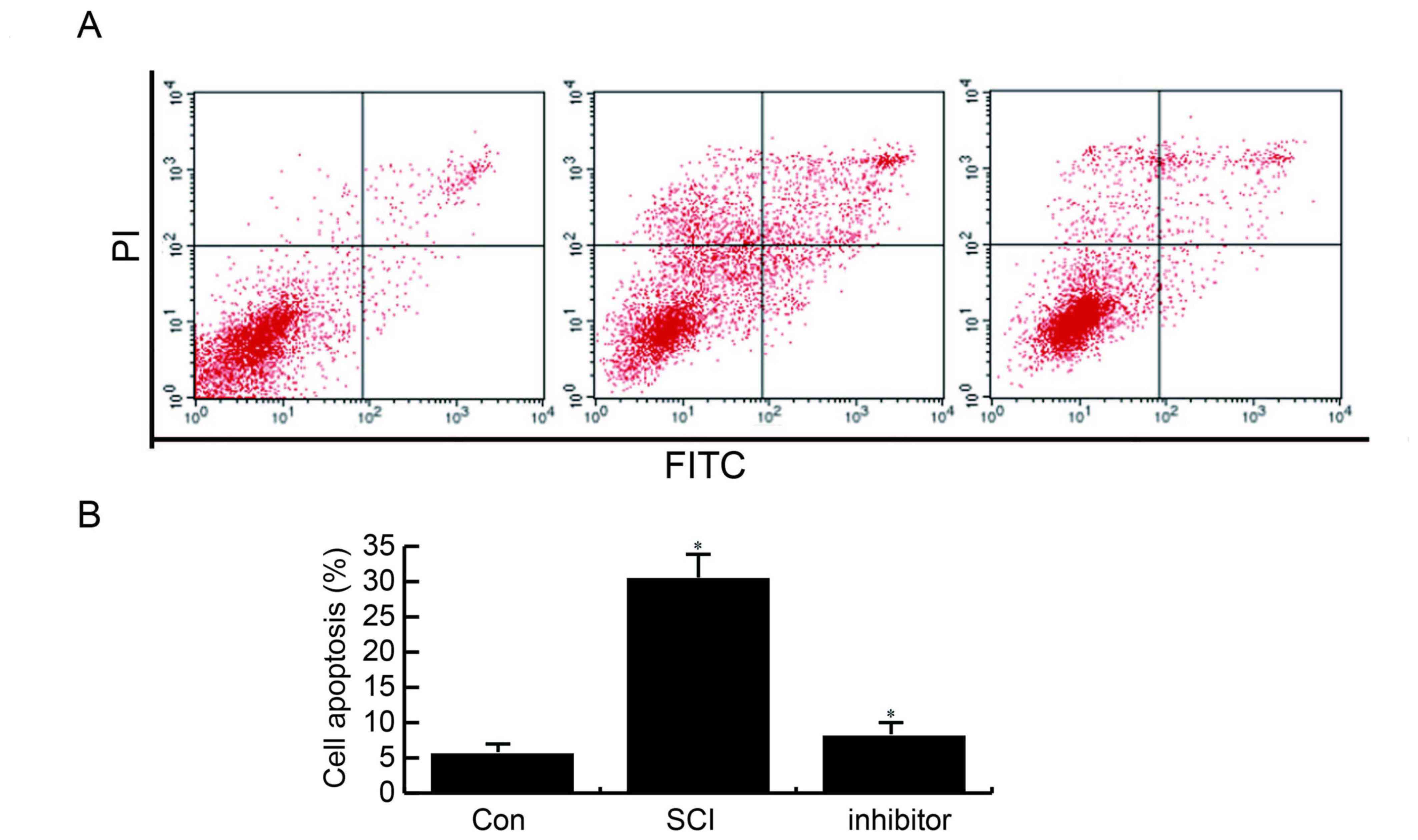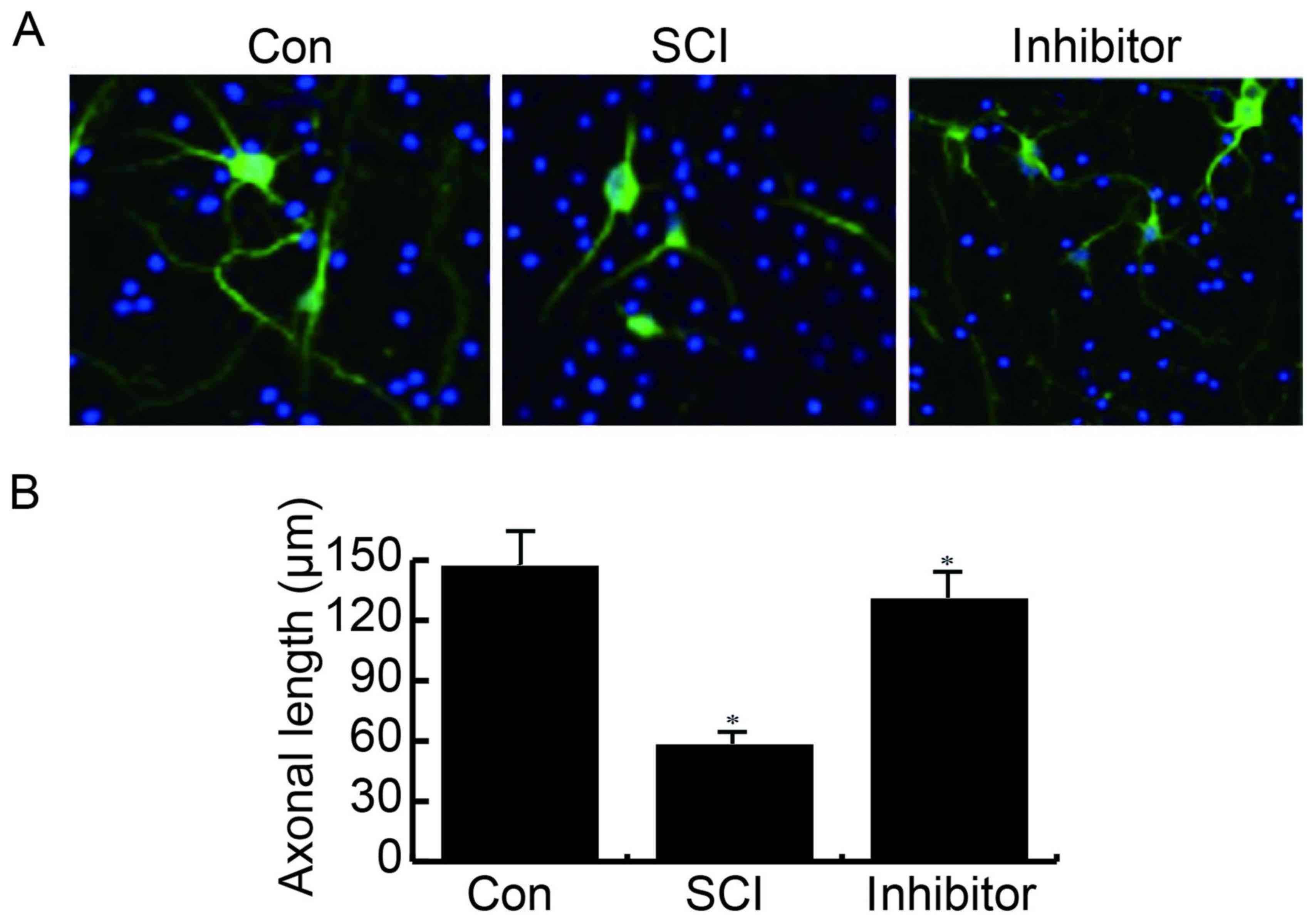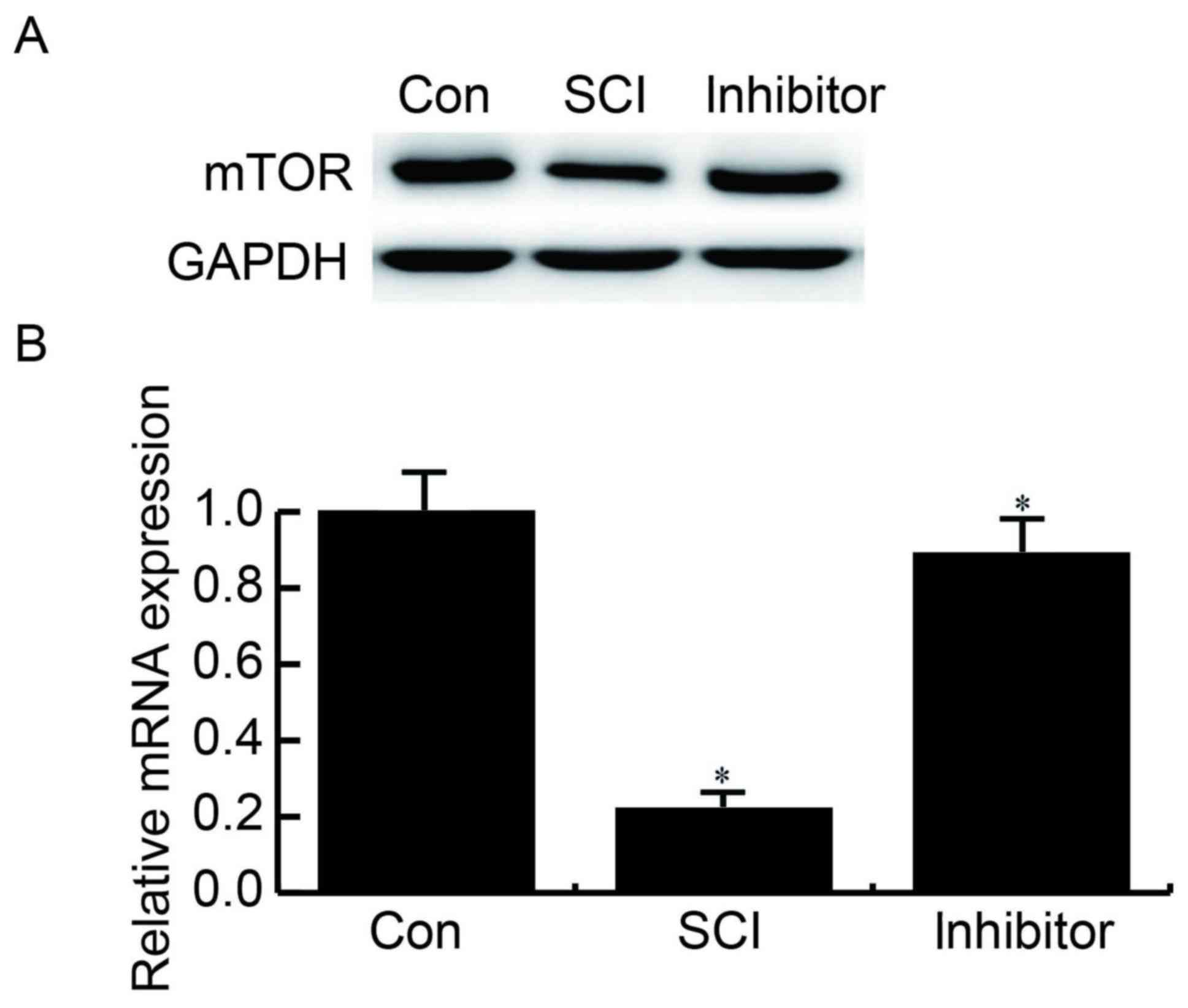|
1
|
W.H.O. Spinal Cord Injury Fact Sheet N.
384. 2013, http://www.who.int/mediacentre/factsheets/fs384/en/November
11–2013
|
|
2
|
Dumont RJ, Okonkwo DO, Verma S, Hurlbert
RJ, Boulos PT, Ellegala DB and Dumont AS: Acute spinal cord injury,
part I: Pathophysiologic mechanisms. Clin Neuropharmacol.
24:254–264. 2001. View Article : Google Scholar : PubMed/NCBI
|
|
3
|
Sekhon LH and Fehlings MG: Epidemiology,
demographics, and pathophysiology of acute spinal cord injury.
Spine (Phila Pa 1976). 26(24 Suppl): S2–S12. 2001. View Article : Google Scholar : PubMed/NCBI
|
|
4
|
Devivo MJ: Epidemiology of traumatic
spinal cord injury: Trends and future implications. Spinal Cord.
50:365–372. 2012. View Article : Google Scholar : PubMed/NCBI
|
|
5
|
Crowe MJ, Bresnahan JC, Shuman SL, Masters
JN and Beattie MS: Apoptosis and delayed degeneration after spinal
cord injury in rats and monkeys. Nat Med. 3:73–76. 1997. View Article : Google Scholar : PubMed/NCBI
|
|
6
|
Fitch MT and Silver J: CNS injury, glial
scars, and inflammation: Inhibitory extracellular matrices and
regeneration failure. Exp Neurol. 209:294–301. 2008. View Article : Google Scholar : PubMed/NCBI
|
|
7
|
Fauad K and Tetzlaff W: Rehabilitative
training and plasticity following spinal cord injury. Exp Neurol.
235:91–99. 2012. View Article : Google Scholar : PubMed/NCBI
|
|
8
|
Strickland ER, Hook MA, Balaraman S, Huie
JR, Grau JW and Miranda RC: MicroRNA dysregulation following spinal
cord contusion: Implications for neural plasticity and repair.
Neuroscience. 186:146–160. 2011. View Article : Google Scholar : PubMed/NCBI
|
|
9
|
Gingras AC, Raught B and Sonenberg N: mTOR
signaling to translation. Curr Top Microbiol Immunol. 279:169–197.
2004.PubMed/NCBI
|
|
10
|
Hay N and Sonenberg N: Upstream and
downstream of mTOR. Genes Dev. 18:1926–1945. 2004. View Article : Google Scholar : PubMed/NCBI
|
|
11
|
Jaworski J and Sheng M: The growing role
of mTOR in neuronal development and plasticity. Mol Neurobiol.
34:205–219. 2006. View Article : Google Scholar : PubMed/NCBI
|
|
12
|
Abe N, Borson SH, Gambello MJ, Wang F and
Cavalli V: Mammalian target of rapamycin (mTOR) activation
increases axonal growth capacity of injured peripheral nerves. J
Biol Chem. 285:28034–28043. 2010. View Article : Google Scholar : PubMed/NCBI
|
|
13
|
Park KK, Liu K, Hu Y, Smith PD, Wang C,
Cai B, Xu B, Connolly L, Kramvis I, Sahin M and He Z: Promoting
axon regeneration in the adult CNS by modulation of the PTEN/mTOR
pathway. Science. 322:963–966. 2008. View Article : Google Scholar : PubMed/NCBI
|
|
14
|
Ambros V: microRNAs: Tiny regulators with
great potential. Cell. 107:823–826. 2001. View Article : Google Scholar : PubMed/NCBI
|
|
15
|
Fineberg SK, Kosik KS and Davidson BL:
MicroRNA potentiate neural development. Neuron. 64:303–309. 2009.
View Article : Google Scholar : PubMed/NCBI
|
|
16
|
Genda Y, Arai M, Ishikawa M, Tanaka S,
Okabe T and Sakamoto A: microRNA changes in the dorsal horn of the
spinal cord of rats with chronic constriction injury: A
TaqMan® low density array study. Int J Mol Med.
31:129–137. 2013. View Article : Google Scholar : PubMed/NCBI
|
|
17
|
Livak KJ and Schmittgen TD: Analysis of
relative gene expression data using real-time quantitative PCR and
the 2(-Delta Delta C(T)) method. Methods. 25:402–408. 2001.
View Article : Google Scholar : PubMed/NCBI
|
|
18
|
Jee MK, Jung JS, Choi JI, Jang JA, Kang
KS, Im YB and Kang SK: MicroRNA 486 is a potentially novel target
for the treatment of spinal cord injury. Brain. 135:1237–1252.
2012. View Article : Google Scholar : PubMed/NCBI
|
|
19
|
Harkema SJ: Neural plasticity after human
spinal cord injury: Application of locomotor training to the
rehabilitation of walking. Neuroscientist. 7:455–468. 2001.
View Article : Google Scholar : PubMed/NCBI
|
|
20
|
Ding Y, Kastin AJ and Pan W: Neural
plasticity after spinal cord injury. Curr Pharm Des. 11:1441–1450.
2005. View Article : Google Scholar : PubMed/NCBI
|
|
21
|
Ziu M, Fletcher L, Rana S, Jimenez DF and
Digicaylioglu M: Temporal differences in microRNA expression
patterns in astrocytes and neurons after ischemic injury. PLoS One.
6:e147242011. View Article : Google Scholar : PubMed/NCBI
|
|
22
|
Loohuis NF Olde, Kos A, Martens GJ, Van
Bokhoven H, Kasri N Nadif and Aschrafi A: MicroRNA networks direct
neuronal development and plasticity. Cell Mol Life Sci. 69:89–102.
2012. View Article : Google Scholar : PubMed/NCBI
|
|
23
|
Ye X, Luo H, Chen Y, Wu Q, Xiong Y, Zhu J,
Dia Y, Wu Z, Miao J and Wan J: MicroRNAs 99b-5p/100-5p regulated by
endoplasmic reticulum stress are involved in abeta-induced
pathologies. Front Aging Neurosci. 7:2102015. View Article : Google Scholar : PubMed/NCBI
|
|
24
|
Jin Y, Tymen SD, Chen D, Fang ZJ, Zhao Y,
Dragas D, Dai Y, Marucha PT and Zhou X: MicroRNA-99 family targets
AKT/mTOR signaling pathway in dermal wound healing. PLoS One.
8:e644342013. View Article : Google Scholar : PubMed/NCBI
|
|
25
|
Edgerton VR, de Leon RD, Tillakaratne N,
Recktenwald MR, Hodgson JA and Roy RR: Use dependent plasticity in
spinal stepping and standing. Adv Neurol. 72:233–247.
1997.PubMed/NCBI
|
|
26
|
De Leon RD, Hodgson JA, Roy RR and
Edgerton VR: Retention of hindlimb stepping ability in adult spinal
cats after the cessation of step training. J Neurophysiol.
81:85–94. 1999.PubMed/NCBI
|
|
27
|
Dobkin BH: Activity-dependent learning
contributes to motor recovery. Ann Neurol. 44:158–160. 1998.
View Article : Google Scholar : PubMed/NCBI
|
|
28
|
Martinez M and Rossignol S: A dual spinal
cord lesion paradigm to study spinal locomotor plasticity in the
cat. Ann N Y Acad Sci. 1279:127–134. 2013. View Article : Google Scholar : PubMed/NCBI
|















